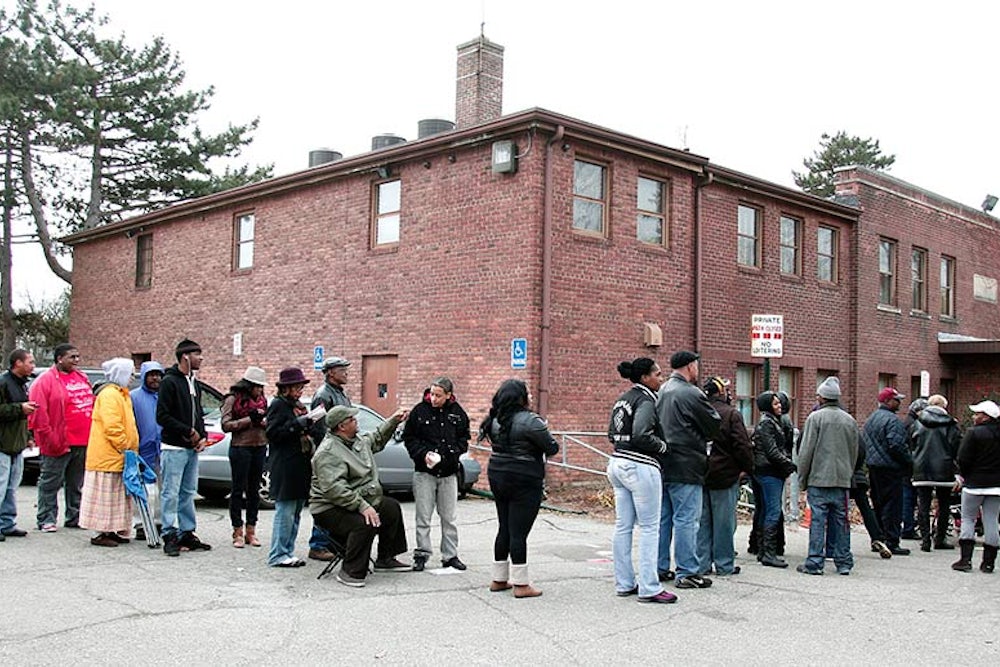During the 1990s, a Democratic dynasty grew out of a town called Hope. Today, the party’s savviest strategists see their fortunes running through Bannock Street. The Denver thoroughfare was the location of Senator Michael Bennet’s campaign headquarters in 2010, when Bennet, banking heavily on mobilizing irregular Democratic voters, defied a nationwide Republican rout and won his seat by 15,444 votes. This year, that effort is the inspiration for the Democratic Senatorial Campaign Committee’s Bannock Street Project, which is making an unprecedented bet on turnout as it deploys the new science of elections to try to preserve the party’s Senate majority in the 2014 midterms.
As the Bannock Street Project sets out to mobilize the votes that Democratic candidates will need to prevail in this November’s most competitive races, its strategists will know exactly who its turnout targets are and in most cases (though, significantly, not all) just where to find them. The maps below, drawn with voter files provided by Democratic data firm TargetSmart, illustrate four specific groups that will appear on the DSCC’s walk sheets and direct-mail lists, and the challenges the group will encounter as it tries to reach them.
The blue icons in each map indicate actual potential voters that the party will be trying to nudge to the polls. (The red icons, as you can probably guess, are the people that the Bannock Street Project will know to avoid.)
1. Non-Electoral College College Students
Most of this year’s big Senate races are in states, like Georgia, that never got worked over by Obama’s field team. Their Democratic turnout targets will include not only Unreliables but also non-voters who weren’t even mobilized in 2012, many of them young whites. (A majority of this year’s Senate races are also in states whose African American population is smaller than the national share.) These five University of Georgia (UGA) dorms will have new residents come fall, but their current populations illustrate the opportunity.

2. Stalwarts Sent Packing By the Economy
In recession-rocked blue states, canvassers will be hunting down Unreliable and Reflex voters who in some instances voted for decades from an address where they no longer live. The diverse, blighted Brightmoor neighborhood of Detroit alone has 76 of these MIA voters, many of whom are so-called “in-state movers” who will need to be registered at their new suburban homes.

3. Small-State Sympathizers
The Democratic Senatorial Campaign Committee has dramatically shifted resources away from advertising in favor of mobilization, a strategy especially well suited to low-population states—fewer people overall means fewer voters to turn out in order to win. But knocking on doors also grows harder as the doors get more far-flung. Moving from one town to the next on the Alaskan panhandle (home to some of the state’s most liberal turf) can often be done only by plane or ferry. Even drivable distances are far: 75 miles separate neighboring Homer and Soldotna.

4. Ex-Early Voters (and Their Many Neighbors)
Dense urban precincts are prime terrain for “knock-and-drag” turnout, but in the cities of North Carolina, changes to state voting laws give Democrats a two-part challenge: They have to mobilize Unreliables while dealing with the fact that many will have habits of voting on days no longer available to them. In Charlotte’s Southside Homes, 49 percent of the Democrats who voted in 2012 are potentially affected by the new rules.

Voter data provided by TargetSmart. Additional research by Linda Kinstler.
